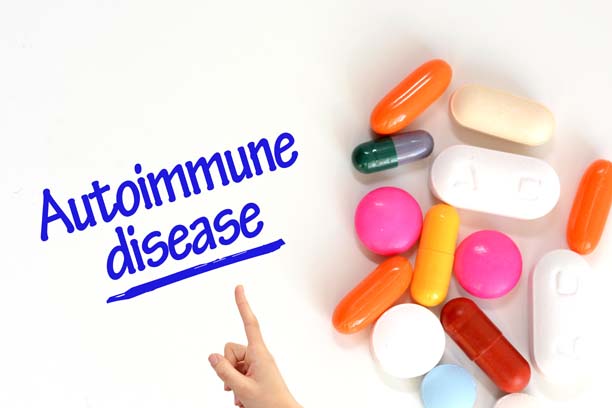Cholestatic Diseases and Role of Ileal Bile Acid Transporter Inhibitors
The liver produces bile, a fluid that helps the body remove waste products and absorb fats and vitamins from food. Normally, bile flows from the liver through small ducts into the intestine. After it has done its job in digestion, most of the bile acids are taken back up at the end of the intestine and recycled to the liver.1
In certain rare childhood liver diseases, such as Alagille syndrome (a rare genetic disorder that affects the liver, heart and other organs due to bile buildup caused by a lack of bile ducts2,3) and progressive familial intrahepatic cholestasis (abbreviated as PFIC, a rare genetic disorder caused by abnormal bile secretion and/or production4), this process does not work properly. Bile flow is reduced or blocked, leading to a buildup of bile acids in the liver and blood – a condition called cholestasis. Over time, this buildup can damage the liver and is also responsible for severe pruritus (itching) – a symptom that can be extremely difficult to live with.5 Children with uncontrolled itching may have trouble sleeping, develop skin injuries from scratching, and face emotional distress that affects the whole family.3
Conventional medicines often provide only limited relief, and in some cases, children have had to undergo surgeries to divert bile flow or even receive a liver transplant simply to control itching.3
Ileal bile acid transporter (IBAT) inhibitors offer a new treatment approach. These medicines work by blocking bile acid reabsorption in the intestine. As a result, more bile acids are eliminated in stool, and their levels in the blood are reduced.3 Livmarli (maralixibat) is the first IBAT inhibitor approved for children with Alagille syndrome and has shown meaningful improvements in itching and quality of life in clinical studies.1,3
Drug Background: Development of Livmarli
Livmarli is an orally administered IBAT inhibitor developed as a treatment for rare paediatric cholestatic liver diseases. Early clinical interest in this approach came from the observation that surgical procedures interrupting bile acid circulation could sometimes reduce severe itching in children with cholestasis. While effective for some, surgery was invasive and carried long-term burden. This led to the idea of achieving the same effect through medication. By targeting IBAT – the key protein responsible for bile acid reabsorption in the intestine – Livmarli was designed to pharmacologically interrupt bile acid recycling and lower systemic bile acid levels.6
Livmarli: Approved Indications
Livmarli has been approved by the US Food and Drug Administration (FDA) for the treatment of cholestatic pruritus in patients with Alagille syndrome aged 1 year and older.6
The medicine is also under regulatory review in Europe for use in Alagille syndrome, and development is ongoing worldwide for other rare cholestatic liver disorders, including PFIC and biliary atresia. To support its development in these rare conditions, Livmarli has received Orphan Drug designation from both the FDA and the European Medicines Agency. This designation helps encourage research into treatments for diseases with limited therapeutic options.6
Mechanism of Action
In cholestatic liver diseases, Livmarli works by blocking the protein IBAT in the small intestine. This prevents bile acids from being reabsorbed at the end of the intestine. Instead, more bile acids are eliminated in the stool. As a result, the overall level of bile acids circulating in the blood is reduced. Lowering these levels may help decrease bile acid–related liver injury and complications, while also reducing the severe itching associated with cholestasis.6
Dosing and Administration
- Treatment is started with a low once-daily oral dose, usually increased after one week if tolerated.7
- The medicine should be taken about 30 minutes before the first meal of the day.7
- It is supplied as a liquid (oral solution). The exact amount is determined by body weight, and a measuring dispenser is provided to ensure accurate dosing.7
- The maximum daily amount is 3 mL once daily for patients at higher body weights.7
- Bottles should be stored at room temperature and used within 45 days after opening, even if liquid remains.7
Clinical Evidence
Clinical studies in children with Alagille syndrome have shown that treatment with Livmarli leads to meaningful reductions in serum bile acid levels and improvements in cholestatic pruritus. Many patients also reported better sleep, improved growth, reduction in xanthomas and overall gains in quality of life. These benefits were often sustained with continued treatment over long-term follow-up.6,7
Livmarli has also been studied in PFIC. While some children experienced reductions in bile acids and relief from itching, responses were more variable, and not all patients benefited.7
Ongoing research in PFIC and other cholestatic liver disorders is further evaluating the effectiveness and durability of this drug across different patient groups.7
Adverse Effects and Monitoring
- While Livmarli has shown benefits in reducing itching and improving quality of life, patients may sometimes experience side effects. The most common include7
- Digestive issues: diarrhoea, abdominal pain, vomiting
- Vitamin deficiencies: low levels of fat-soluble vitamins (A, D, E, K)
- Liver test changes
Monitoring
To ensure safety, liver function and vitamin levels are checked before starting treatment and regularly during therapy. If liver tests become abnormal or vitamin deficiencies persist despite supplementation, the dose may be adjusted, treatment temporarily paused or discontinued. Persistent gastrointestinal symptoms, dehydration, or signs of gastrointestinal bleeding should also prompt close monitoring and possible treatment interruption.7
Accessing Livmarli in India Under the Named Patient Program
Livmarli is approved in the United States but is not yet widely marketed in India. Patients can access it through the Named Patient Program (NPP), a special pathway that allows doctors to request medicines not commercially available locally when standard treatment options are limited.8
Under the NPP, the treating hepatologist can submit a request for Livmarli, including relevant medical details and justification for use. The process involves regulatory approvals and import arrangements, after which the medicine is supplied directly to the hospital.
To support families, patient assistance services can help manage the paperwork, coordinate with healthcare providers, and ensure timely import and delivery of Livmarli, so treatment can begin without unnecessary delays.
Final Takeaway
- Livmarli helps reduce bile acid levels in children with cholestatic liver diseases, which can improve itching and related symptoms.
- It works in the intestine by blocking reabsorption of bile acids, allowing them to be eliminated safely in stool.
- Treatment benefits may include improved sleep, growth, skin health, and overall quality of life.
- Access in India is possible through the NPP.
Frequently Asked Questions
1. What should I do if a dose is missed?
Take the missed dose as soon as possible within 12 hours. If more than 12 hours have passed, skip it and take the next dose at the usual time.
2. What if too much Livmarli is taken?
In case of an accidental overdose, seek medical advice immediately, as it may increase the risk of side effects.
Note:
This information is provided for educational purposes only and is not a substitute for professional medical advice. Livmarli should only be taken under the guidance of a qualified healthcare provider. Patients and caregivers should always consult their doctor or pharmacist for advice on diagnosis, treatment, and medication use, and should not make changes to prescribed therapy without medical supervision.
Disclaimer:
Rx4U procures prescribed medicines directly from manufacturers or authorized distributors. It does not claim ownership of any trademarks and complies with the provisions of the Trademark Act, 1999, particularly Sections 30 and 30(1) concerning ‘Fair Use’. It solely facilitates access to new launches through named patient import.
References
- Hof WFJ, de Boer JF, Verkade HJ. Emerging drugs for the treatment of progressive familial intrahepatic cholestasis: a focus on phase II and III trials. Expert Opin Emerg Drugs. 2024;29(3):305-320. doi:10.1080/14728214.2024.2336986
- Diaz-Frias J, Kondamudi NP. Alagille syndrome. In: StatPearls. StatPearls Publishing; January 2025-. Updated August 12, 2023. Accessed September 15, 2025. https://www.ncbi.nlm.nih.gov/books/NBK507827/
- Gonzales E, Hardikar W, Stormon M, et al. Efficacy and safety of maralixibat treatment in patients with Alagille syndrome and cholestatic pruritus (ICONIC): a randomised phase 2 study. Lancet. 2021;398(10311):1581-1592. doi:10.1016/S0140-6736(21)01256-3
- Siddiqi IA, Tadi P. Progressive familial intrahepatic cholestasis. In: StatPearls. StatPearls Publishing; January 2025-. Updated July 3, 2023. Accessed September 15, 2025. https://www.ncbi.nlm.nih.gov/books/NBK559317/
- Al-Dury S, Marschall HU. Ileal bile acid transporter inhibition for the treatment of chronic constipation, cholestatic pruritus, and NASH. Front Pharmacol. 2018;9:931. doi:10.3389/fphar.2018.00931
- Shirley M. Maralixibat: first approval. Drugs. 2022;82(1):71-76. doi:10.1007/s40265-021-01649-0
- Prescribing information. Mirum Pharmaceuticals, Inc.; 2021. Accessed September 15, 2025. https://www.accessdata.fda.gov/drugsatfda_docs/label/2021/214662s000lbl.pdf
- Patil S. Early access programs: benefits, challenges, and key considerations for successful implementation. Perspect Clin Res. 2016;7(1):4-8. doi:10.4103/2229-3485.173779



